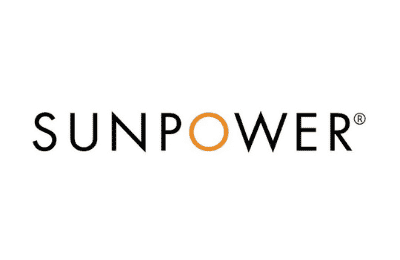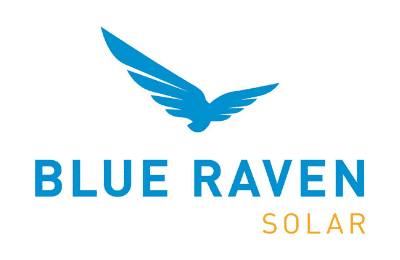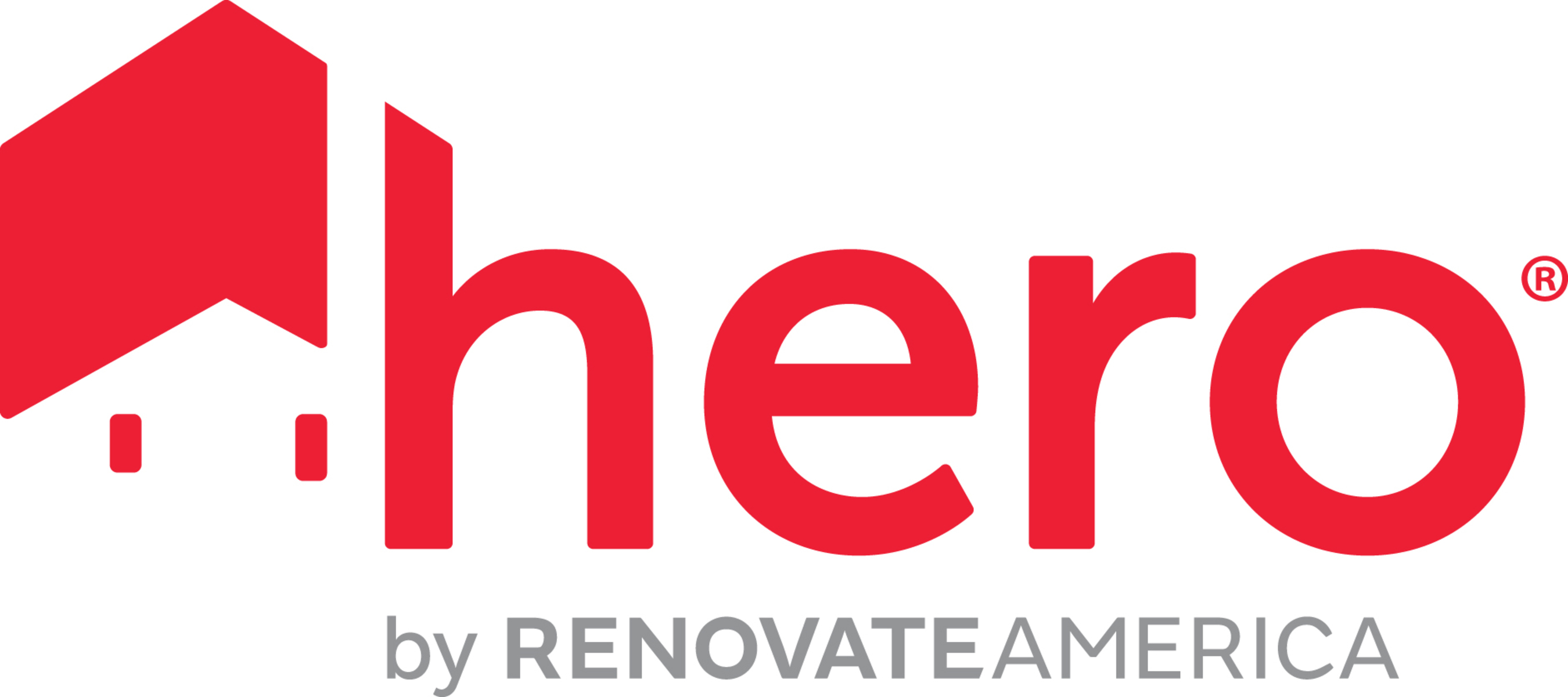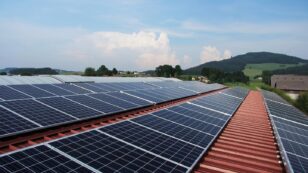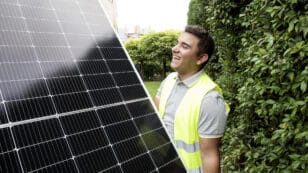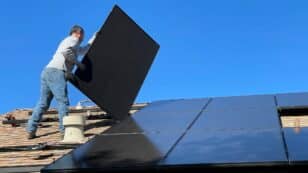

What Is the Solar HERO Program? Interest Rates, History and Alternatives (2024)
Here’s what we’ll cover in this article:
- What was the HERO program?
- Is the HERO program still available?
- What was the HERO program interest rate?
- What are alternatives to the HERO program?
Each product and or company featured here has been independently selected by the writer. You can learn more about our review methodology here. If you make a purchase using the links included, we may earn commission.
What Was the HERO Loan Program?
The Home Energy Renovation Opportunity (HERO) program by Renovate America was a government-backed financing program for homeowners looking to make energy-efficient upgrades. The program covered the upfront costs of various home improvements like solar panel installations, HVAC system upgrades, insulation upgrades, window replacements, water heater replacements and roofing services.
The HERO loan’s lenders provided 100% of the financing for the purchase cost and installation of qualifying renewable and energy-efficient products, making it an appealing option for homeowners looking to conserve energy.1 The program was particularly attractive as borrowers only had to make annual payments rather than monthly.
The HERO Program was the largest residential Property Assessed Clean Energy (PACE) platform in the U.S., financing more than $1.75 billion in home energy and efficiency improvements across more than 75,000 homes.2
PACE is the parent program of HERO, with an entire system of financing energy-efficient upgrades for residential, commercial and industrial properties. Through local PACE programs, governments will hand over the initial funds for the purchase price of energy-efficient or renewable energy installation projects. Then, the home or property owner repays the loan with energy savings over a set period of time. PACE financing terms are typically 10 to 20 years.3

SunPower
Pros
- Most efficient panels on the market
- National coverage
- Cradle to Cradle sustainability certification
- Great warranty coverage
Cons
- Expensive
- Customer service varies by local dealer
SunPower designs and installs industry-leading residential solar and storage solutions across all 50 states. With a storied history of innovation dating back to 1985, no other company on this list can match SunPower’s experience and expertise.
SunPower earns its position as the top national installer on our list for a handful of reasons: It installs the most efficient solar technology on the residential market, offers the most expansive service area and backs its installations with a warranty well above the industry standard. All the while, SunPower pioneers sustainability efforts within the industry.
If that weren’t enough, SunPower systems come packaged with products all manufactured in-house by its sister company, Maxeon. This means that your panels, solar cells, inverters, battery and EV chargers are designed to work together and are all covered under the same warranty.
SunPower’s biggest downside? Its high-efficiency panels are considerably more expensive than most of its competitors’ products. However, its powerful panels are workhorses that make up for the initial cost with more backend production (think about this like spending more money for a car that gets more miles per gallon).
Facts and Figures: SunPower
| EcoWatch Rating |
|---|
| Better Business Bureau (BBB) Rating |
| Year Founded |
| Average Cost ($-$$$$$) |
| Solar Services |
| Brands of Solar Equipment Offered |
| Warranty Coverage |
| 5 |
| A+ |
| 1985 |
| $$$$ |
| Solar Panels, Solar Batteries, EV Chargers, System Monitoring |
| SunPower Panels |
| 25-year all-inclusive warranty |

Blue Raven Solar
Pros
- Industry-leading in-house financing
- Competitive pricing
- Excellent reputation
Cons
- Doesn't offer solar batteries (coming 2022)
We like Blue Raven Solar because it understands that, for most homeowners, the cost of solar presents the biggest barrier to entry.
For that reason, Blue Raven Solar developed an innovative solar financing plan that offers in-house, flexible, zero-money-down options. The results speak for themselves, as Blue Raven Solar is now one of the fastest-growing solar companies in the nation and was recently acquired by SunPower. Its BluePower Plus+ plan (exclusive to Blue Raven) mimics the flexible structure of a lease while still providing the greatest benefits of owning your system.
Eligible homeowners enjoy 18 months of solar power before having to pay their first bill. When coupled with the federal solar investment tax credit (ITC), the initial energy savings can offset more than a third of the overall cost of a system before requiring a dollar down.
In contrast, other installers can only offer similar financing through solar leases, PPAs or third-party providers (such as Mosaic or Sunlight). Third-party loan providers can complicate the process, while opting for a loan or PPA will disqualify you from some of solar’s biggest benefits (additional property value, federal solar tax credit and local solar incentives).
Facts and Figures: Blue Raven Solar
| EcoWatch Rating |
|---|
| Better Business Bureau (BBB) Rating |
| Year Founded |
| Average Cost ($-$$$$$) |
| Solar Services |
| Brands of Solar Equipment Offered |
| Warranty Coverage |
| 4.5 |
| A+ |
| 2014 |
| $$ |
| Solar Panels, System Monitoring |
| Trina Solar, Canadian Solar, SolarEdge, Silfab, SunPower |
| 25-year manufacturer warranty; 10-year workmanship warranty, 2-year production guarantee |
Is the HERO Loan Program Still Available?
The HERO loan program is no longer available in any state. In late 2020, the Renovate America company filed for Chapter 11 bankruptcy protection after having to tighten underwriting requirements in accordance with a 2018 legislation passing.4
Home loan provider Renovate America was the target of more than 50 lawsuits and spent $15 million on litigation and settlement expenses.5
The company is now run by Finance of America, which offers direct home improvement financing options to homeowners across the country.
Where the HERO Program Failed
Here’s where the HERO program went wrong:
- The loans increased homeowner property taxes
- HERO program interest rates were as high as 9%6
- Loan structure led to challenges in selling or refinancing a home
- Unreputable contractors overcharged customers to profit off the initiative
While these loans were incredibly helpful for some homeowners, nonpayment of HERO program loans had big consequences for others. Since the loans were tied to the property, homeowners could lose their homes if they missed a payment.
Another consequence of the loan being attached to the homeownership itself is that it complicated the moving process. Homebuyers would have to assume the terms and interest rates of the loan payments. Finding a buyer interested in this extra cost proved to be difficult for some.
Next, some online resources led homeowners to believe the entire cost of a HERO program project was tax-deductible. That was not always the case. Due to the U.S. government’s 2017 tax reform bill, property tax deductions were capped at $10,000.7 If your property taxes were already high, the likelihood of being able to write off your HERO program payments was very low. Many homeowners experienced unexpected increases in their property tax bills.
Since there was wide approval for these loans (not based on credit score), some critics have compared them to predatory, subprime loans with high interest rates.
Check out this video from ABC News explaining the experiences of homeowners:
What is the Property Assessed Clean Energy (PACE) Program?
The parent program of HERO, the Property Assessed Clean Energy (PACE) program is a system for financing energy efficiency and renewable energy improvements on a home or business property.
As of 2019, over 200,000 homeowners have made $5 billion in energy efficiency and other improvements to their homes through PACE financing.9 PACE programs have been approved and backed by state and local governments in more than 35 states, however, HERO loans are only approved for certain residential owners in California, Florida and Missouri.
Like the HERO program, PACE loans are also tied to your property. Be sure to consult with an expert before getting a loan through the PACE program.
What Are Alternatives to the HERO Loan?
There were a few key benefits to HERO loans that made them particularly attractive to homeowners:
- 100% financing
- Annual payments instead of monthly payments
- Eligibility is not based on credit score
- Loans were attached to the home, not the homeowner
- Interest paid on the loans had tax benefits similar to mortgage payments
A key aspect of the HERO program was the lack of credit requirements. For low-income families with lower credit scores, we encourage looking into the many local low-income solar programs across the country. You can also visit our solar incentives learning hub.
Any reputable solar company should connect you with the best incentives in your area. You can consult with a solar company near you to learn more about the loans, rates and terms of financing programs near you.
Comparing authorized solar partners
-
- Most efficient panels on the market
- National coverage
- Cradle to Cradle sustainability certification
- Great warranty coverage
- Expensive
- Customer service varies by local dealer
A+Best National Provider1985SunPower Panels25-year all-inclusive warranty
Having trouble deciding? Click below and use our process to receive multiple quotes instead:

 233k
233k  41k
41k  Subscribe
Subscribe 
